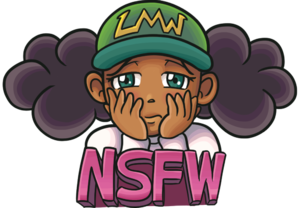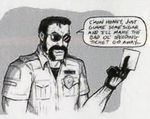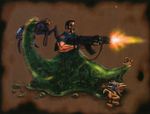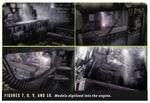Guardian/Flesh & Wire (lost build of cancelled multi-platform action-adventure game; 1998-1999)
Flesh & Wire is a canceled shooter that was developed by Running With Scissors, the creators of the controversial but beloved POSTAL series. It was to be published by Ripcord Games (publishers of the first POSTAL game).
History
Due to the massive controversy of POSTAL, an isometric top-down shooter about a guy going on a murdering spree after believing the US Air Force is using a hate plague to brainwash the people living in a fictional town called Paradise, Running With Scissors was told by their publisher that if they want to continue making games for them, then they're gonna have to ditch making a sequel and start a new IP. To make matters worse, Ripcord Games own the license of the series at the time, so RWS couldn't leave the publisher to start a new POSTAL game on their own. They also rejected two ideas that Vince Desi proposed to them, but they were able to come to an agreement with them.
Guardian
Story/Gameplay
The story would revolve around Rakk, a fighter who joins the Umbreks to stop the Nullids who are about to "have earthlings for breakfast." According to the lore, the Umbreks were oppressed by the technology advanced Nullids and killing any indigenous species became a real taboo for them. It's unknown if the developers planned to implement this in the game. If true, It's possible that, unlike POSTAL, killing them would be encouraging for the player.
You would've started off with a core set of moves including a traditional Umbrek weapon called an Arraka. As the game goes on, you acquire new skills through genetic assimilation, a process consisting of the ability for Umbreks to absorb the minds of the Nullids. The absorbed skills would simply disappear after a certain time. Excessive use could cause the protagonist's mind to change for the rest of the game.
Development
At E3 of 1998, Running With Scissors announced that development of a game had begun and it was planned to be the company's second title.
When Vince Desi was asked about the game by a Gamestop journalist, Vince replied by stating that the game will make heavy use of motion capture technology and was all about "flesh and wire." It would later be revealed that it was going to be titled Guardian. Originally a third-person shooter, the game would've used 3D characters and real-life digitized backgrounds with multiple camera angles, dynamic lighting and special effects.
It was scheduled for a 1999 release date on PC and was planned to have a DVD version with better graphics.
However, that concept would further grow into what became what it is.
Flesh & Wire
Story/Gameplay
Unlike Guardian, Flesh & Wire would've centered around a sleazy cop named Angus. One morning, he woke up to see his city being engulfed by a bio-ship named Nulloid. Not only that, but he also found a blob-like creature devouring his legs. Rather than calling a doctor, he came to the realization that he could control the blob and use it for good.
From there on, you would've moved around levels, utilized special abilities and solved puzzles. You're such as a ladder to reach high places, a bungee to get down and a shield to protect yourself from enemies.
It bears many similarities to 1989's A Boy and His Blob: Trouble on Blobolonia, a game developed by Imagineering for the NES. Unlike that game however, Flesh & Wire was far less family-friendly and featured grotesque monster designs. You could carry weapons such as a gatling cannon, an electric gun and poison gas, to which you could even combine to make even more powerful weapons.
The game would also encouraged players to collect as much material as possible to increase the amoeba's size and speed, and would even lose some of its mass the more the player moves.
Development
The animation for the characters were all done by rotoscoping live martial arts students from a local gymnasium, who were asked to move around like the creatures from the game. These movements would be recorded on two synchronized digital cameras that were set 90° apart from each other (front and back). They were then digitized and loaded onto the animation software Softimage 3D as reference points for the animators to use while animating.
The studio's art team, led by Randy Briley came up with the idea to build the game's levels using miniature layouts and models as a way to save money and resources. The developers tested this out by using a photo of a railway model assembled by British singer Rod Stewart and ported it into RSPiX, Running With Scissors' in-house game engine they used to create the original POSTAL game (which also used digitized backgrounds, but are all hand-paintings.) The results were quite successful, so they carried on with the team's process.
The models were built using random scraps like PVC piping, copper tubing, old VCR’s and among other stuff. The pieces were then glued upon with a hot glue gun and then painted over using standard modeling paints. Many of the game's back-drops were created using Styrofoam panels, which were easy to get hold of and standardize. After the scene was created, they sent it to a stage with floodlights where it would be captured using a regular digital camera. A smoke generator would be used to both smooth out the material's edges and give the photo volume.
In March 1999, it was announced the game would be known as Flesh & Wire That same year in June in an IGN article, it was revealed that it was planned to be released on the Sega Dreamcast, Sony's newly announced Playstation 2 and Nintendo's codename Dolphin, to which it would later be known as the GameCube. If it were to be released, this would've been RWS' first console game, predating both the Switch and PS4 versions of POSTAL Redux.
Cancelation
It would also be that same year that Ripcord Games' parent company, Panasonic Interactive Media would announce their closure. Earlier that year, the senior management team at Panasonic made a deal to acquire Ripcord Games and turn it into an independent company. Vince Desi then announced that Running With Scissors would continue developing Flesh & Wire on their own and stated that they'll support Ricord's new team on a new original effort. Unfortunately, Ripcord Games decided to drop their support for the game, despite RWS reported in a December 1999 issue of Spin magazine that they sunk $1.5 million into the project and was planning to release it next year. No publisher was ever found to support the project, so they decided to cancel it and focus on other projects, some of which would also be canceled.
All hope wasn't lost for the Arizona-based company as Ripcord Games' license for the POSTAL series was expiring. RWS would then go on to create their most well known game, POSTAL 2.
Availability
Currently, only the story, a handful of concept art, production photos and a few magazine scans of the game's backgrounds are known to exist. It's unknown how much work was done with the game and if RWS still has any of the code or props they used for the game. Vince Desi himself stated in a 2016 interview with The Gaming Ground that the team at RWS would love to take another look into the project, although that has yet to happen as of writing this.
Gallery
References
Unseen64 article. Retrieved 25 May '22
Vince's Interview with The Gaming Ground. Retrieved 25 May '22
IGN page on the game. Retrieved 18 Oct '22
Gamefaqs page on the GameCube version. Retrieved 25 May '22
Gamefaqs page on the PS2 version. Retrieved 25 May '22
IGN article of the game. Retrieved 25 May '22
Steam Community post about the game. Retrieved 25 May '22
Geocities page of the game. Retrieved 25 May '22
Official Website. Retrieved 25 May '22
The March 1999 issue of GDM. Retrieved 19 Oct '22






